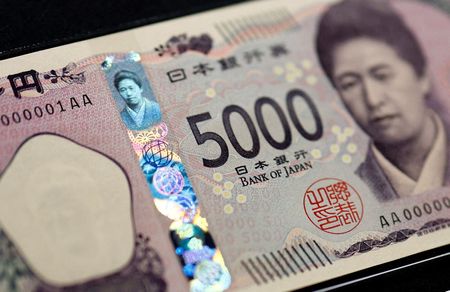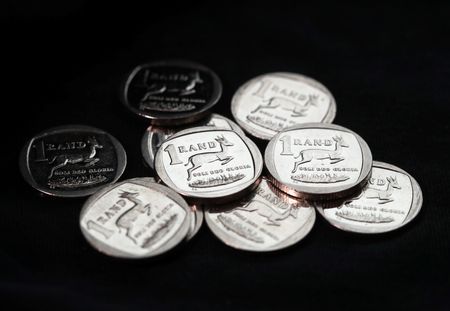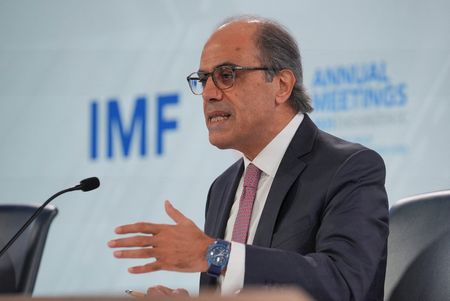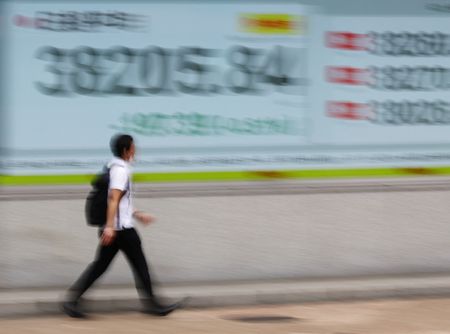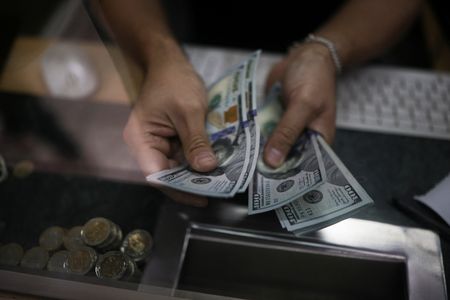By Rae Wee
SINGAPORE (Reuters) -The yen slid after hardline conservative Sanae Takaichi was elected as Japan’s first female prime minister, as investors bet that the move could bring about a muddied rate outlook and greater fiscal largesse.
Takaichi, leader of Japan’s ruling Liberal Democratic Party, won the lower house vote to choose the next prime minister on Tuesday, clearing the way for her inauguration later in the day.
The move was widely expected by investors after she was backed by the right-wing opposition party Ishin, though the yen still fell in reaction to the outcome.
The Japanese currency was last down 0.4% at 151.38 per dollar.
“While fiscal stimulus is expected, it is unlikely to be bold given the difficulties of policy management,” said Hirofumi Suzuki, chief FX strategist at SMBC.
“A sharp depreciation of the yen is likely to be avoided, with gentle downward pressure on the yen expected to persist.”
Earlier on Tuesday, local media reported that Takaichi had finalised a plan to appoint Satsuki Katayama, a former regional revitalisation minister, as finance minister.
During an interview with Reuters in March, Katayama signalled her preference for a stronger yen. Her appointment could give markets cause to rethink the idea of pushing the yen too low.
Still, Takaichi’s support for fiscal stimulus and looser monetary policy kept investors on edge and complicates the Bank of Japan’s path for rate increases.
“From a political perspective … there may be considerations to delay monetary tightening until fiscal easing gains traction. The BOJ is thus caught between a rock and a hard place,” said HSBC chief Asia economist Fred Neumann.
The yen struggled against its other peers, with the euro last up 0.33% at 176.06 yen, while sterling rose 0.28% to 202.55 yen.
WAITING ON THE FED
In the broader market, currencies were mostly rangebound on Tuesday, though the dollar reversed its losses from earlier in the session as it drew support from a weaker yen.
Sterling was down 0.16% to $1.3383, while the euro fell 0.1% to $1.1630, little helped by easing political uncertainty in France.
The U.S. dollar index was up 0.16% at 98.77, while the Australian dollar fell 0.21% to $0.6499.
The overall market mood was largely upbeat after U.S. President Donald Trump said on Monday he expects to reach a trade deal with Chinese President Xi Jinping. And White House economic adviser Kevin Hassett said that the 20-day U.S. federal government shutdown was likely to end this week.
Jitters over credit risks among U.S. banks also dissipated slightly.
Yet the optimism failed to move currencies significantly, as investors stayed largely on guard ahead of a slew of risk events next week, headlined by the Federal Reserve’s policy meeting.
“My sense is that next week is probably a far more important week in terms of risk,” said Ray Attrill, head of FX research at National Australia Bank.
“Given where markets are priced … the risk is that the commentary surrounding a cut next week really sort of leads to some questioning of current confidence about a follow-up move in December,” he said of the expectations for a Fed cut.
In other currencies, the New Zealand dollar fell 0.3% to $0.5727, while the onshore yuan firmed slightly to 7.1183 per dollar, after China’s central bank set the daily midpoint at its firmest level in a year.
(Reporting by Rae Wee; Editing by Shri Navaratnam)

